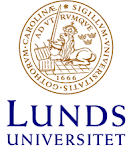Mastering Bitcoin by Andreas M. Antonopoulos
(O’Reilly).
Copyright 2014 Andreas M. Antonopoulos, 978-1449374044.
This coming from Antonopolous, the evangelist himself, is defintely worth a closer study.
Book has a rather ‘for newbies’ opening chapters, but warms up into a hands-on sequence that coders may use as a guide to set up as a fully operational Bitcoin node.
The examples are illustrated in Python, C++ and using the command-line of a Unixlike operating system such as Linux or Mac OSX. All code snippets are available in the Github repository (…)
All the code snippets use real values and calculations where possible, so that you can build from example to example and see the same results in any code you write to calculate the same values. For example, the private keys and corresponding public keys and addresses are all real. The sample transactions, blocks and blockchain references have all
been introduced in the actual bitcoin blockchain and are part of the public ledger, so you can review them on any bitcoin system….


